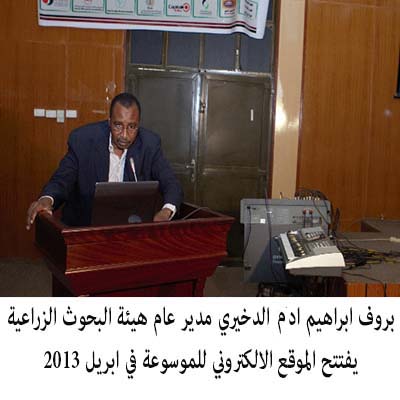التغذية
تسمين الأغنام
مقدمة:
الثروة الحيوانية من الثروات القومية الهامة والجديرة بأن تحظى بالاهتمام المناسب وذلك لتغطيتها القسم الأكبر من استهلاك المواطنين من منتجاتها الحيوانية.
وللأغنام مركزها الأول والخاص في إنتاج اللحوم لما يتمتع به لحمها من مركز ممتاز لدى المستهلك.
ومهنة تسمين الأغنام من المهن القديمة في الوطن العربي
اعتبارات فنية أساسية في تسمين الخراف:
إن النمو السريع للخراف وزيادة وزنها مع زيادة معدل تحويل الأعلاف يعتمد على الصفة الوراثية لها وذلك ضمن الظروف التربوية والصحية المناسبة وبشكل عام تزداد سرعة نمو الخراف من الولادة وحتى مرحلة البلوغ ومن ثم تنخفض سرعة النمو عند قربه من المرحلة التامة للنمو ، ومن الملاحظ أن الخراف تصل لـ75% من وزنها الأعظمي خلال السنة الأولى من عمرها وأن 50% من هذا الوزن يحدث خلال الأشهر الثلاثة الأولى من حياتها و25% يتم خلال الأشهر الثلاثة التالية أما الـ25% فيتم خلال الأشهر الستة الأخيرة من السنة الأولى.
لذا تستجيب الخراف الصغيرة للتسمين وتكوين اللحم أكثر من الخراف الكبيرة وبتكاليف وكميات أعلاف أقل وبالتالي تحقق ربحاً أوفر لأن سرعة النمو تكون كبيرة بعد الولادة مباشرة كما تتصف الخراف الصغيرة بقابليتها الشديدة لتكوين اللحم وترسيب الدهن وكلما كان التسمين سريعاً كلما انخفضت كمية الغذاء اللازمة لإنتاج 1 كجم وزن حي وبالتالي فإنه من الأفضل للمربي تسمين الخراف الصغيرة عند توفرها.
لدى تسمين الخراف الصغيرة تعطي 75% من معدل الزيادة الوزنية لحم أحمر و 25% دهناً أما الخراف التي تبلغ من العمر /8/ أشهر تقريباً فتعطي 50% لحم أحمر و50% دهن والخراف الكبيرة البالغة تعطي 10% لحم و 90% دهن.
إذا كان مشروع التسمين واسعاً ويتألف من عدة حظائر ضمن الحظيرة الواحدة فيفضل تقسيم وفرز الخراف إلى مجموعات متجانسة بالحجم لأن الحيوانات الكبيرة تنافس الحيوانات الصغيرة على الغذاء مما يسبب عدم التجانس في النمو إضافة لاحتمال إصابة الحيوانات الكبيرة بالتخمة مما يؤدي لنفوق بعضها.
تسمين الخراف بالطريقة المركزة (التقليدية):
تعتمد طريقة التسمين المركز على شراء الخراف الصغيرة والتي يتراوح وزنها مابين 25-30 كجم وبعمر 4-6 أشهر أو أكبر واستعمال العلائق الجافة كالحبوب والأكساب والأتبان والتبن وبيع الخراف عند انتهاء مدة التسمين.
وتتراوح مدة تسمين الخراف من 90-120 يوماً ويمكن أن تقل عن ذلك إذا كانت الخراف كبيرة والتغذية مركزة، وإن التسمين السريع في زمن قصير يكون أكثر اقتصادية من التسمين البطيء خلال فترة زمنية طويلة وذلك في حال ثبات الأسعار بالسوق وإن تقلب الأسعار قد يؤدي إلى إطالة فترة التسمين وبشكل عام كلما انخفضت كميات الغذاء اللازمة لإنتاج 1 كجم نمو هذا مايزيد في كمية الربح الناتج.
ويجب على المربي أن يكون متتبعاً لأسعار الخراف الخامية وأسعار اللحوم والخراف المسمنة في السوق لأن شراء الخراف وتسويقها في الأوقات المناسبة يزيد من فرصة المربي للحصول على الربح لأن الخرف تشكل نصف المبيع في نهاية المشروع.
مواصفاتالخراف الجيدة القابلة للتسمين:
Effect of supplemental concentrate feeding Frequency on Groundnut Haulms’ Intake,
Digestibility and Rumen Fermentation in Sheep
ABSTRACT
A total of 12 male sheep with an average BW of 19±2 kg were used in this experiment to assess the effects of frequency of supplementary concentrate on digestion, rumen fermentation and voluntary feed intake of groundnut haulms. The supplementary concentrate (100 g/day) was offered once (1×), divided into two equal portion offered twice (2×) or divided into three equal portion offered three times daily (3×). The dry matter intake (DMI), digestible dry matter intake and crude protein intake (CPI) of groundnut haulms showed no significant difference if concentrated supplement were offered once (1×), twice (2×) or three times (3×) a day. The digestibility values for DM, CP and NDF were not responding to the feeding frequencies of concentrated supplement. The total nitrogen intake, urinary nitrogen and nitrogen retention were similar among the frequencies, however, fecal nitrogen was significantly (P< 0.05) different when the concentrated supplement
offered 1× than 2× or 3× a day. The ruminal NH3-N was significantly (P<0.05) higher when the concentrated supplement offered 1× than 2× or 3× a day. As a conclusion, sheep maintained on groundnut haulms (10.3% CP) were not responding to a concentrated supplement if offered once (1×), twice (2×) or three times (3×) a day due to a sufficient amount of crude protein in the basal diet.
Effect of Breed, Sex and Age on Body Measurements of Sudanese Camels (Camelusdromedarius)
1Ishag, I.A., 2Eisa, M.O. and 3Ahmed, M.K.A.
1Department of Animal Production, Faculty of Agriculture, University of Sinnar.
2Department of Animal Production, Faculty of Agriculture, Omdurman Islamic University
3Department of Genetics and Animal Breeding, Faculty of Animal Production,
University of Khartoum, Sudan.
Abstract: Data on body measurements and weight were obtained on 274 camels (different ecotypes).
The purpose of this study was to determine factors affecting body measurements of Sudanese camel
breeds and re-grade those camels according to their morphological traits. The results of this study
showed that average barrel girth, heart girth, height at shoulders and body weight were 2.45± 0.02
m; 2.02± 0.01 m; 1.90± 0.01 m and 463.25± 4.90 kg respectively. The results also revealed that
phenotypic measurements were significantly influenced by type of camel and age group. The Shanbali
camel recorded the highest values of barrel girth, heart girth and body weight, followed by those of
the Kenani camel. Rashaidi, Anafi and Bishari camel breeds recorded the lowest values. Regarding
to the age groups the camels in the second group 7 to 9 years had significantly the highest values of
phenotypic measurements, followed by those of the third group 10 to 12 years, while the animals in
the first group 4 to 6 years recorded the lowest values. Moreover, the results showed that the sex of
camel significantly affected the heart girth, height at shoulders and body weight; and the males had
significantly higher (P< 0.5) values than those of females. The study concluded that the Shanbali and
Kenani camels are the largest Sudanese camel breed followed by Maalia and Maganeen camels.
Growth of fodder crop (Sorghum bicolor L.) as animal feed
Abdel Rahman M. Nour¹, Ali A. Hassabo¹ and Mohamed O.Eisa²
¹School of Animal Production, Faculty of Agricultural Technology and Fish Science, University of Al Neelain,
Khartoum, Sudan; ²Department of Animal Production, Faculty of Agriculture, Omdurman Islamic University, Postal Code: 14415, Omdurman, Sudan
Abstract
An experiment was conducted at experimental farm of Faculty of Agriculture (U of K) in 2007 July to October
to study the effect of three different Khartoum State soil obtained from river Nile (G), shambat area (SH) and El-
Fetehab area (F) on the growth of sorghum (Abu-sabeen). The experiment was done in plastic pots in glass house.
Complete randomized block deign (CRD) were used. Plant height was recorded throughout the plant growth which
showed significant difference. G Soil gave higher range followed by SH and F respectively.
Constraints of camel pastoralists in Gedarif state, eastern Sudan
Y. M. Abdalatif¹, M. O. Eisa², A. B. Mustafa³ and A. M. Salih4
¹Ministry of Animal Resources and Fisheries
²Department of Animal Production, Faculty of Agric., Omdurman Islamic University
3University of Juba, P.O. Box: 12327, Khartoum, Sudan
4Deptatment of Animal Nutrition, Faculty of Animal Production, Khartoum University-Sudan
Abstract
This field study was conducted between Oct 2005 and Aug 2008 in Gedarif state, eastern Sudan. The objective
was to provide knowledge on constraints faced by camel herders, and to identify the solutions as an essential step
towards the development of camel herding in this state. A set of detailed structured questionnaires were used to
collect information from camel herders. The results showed that, nomadic tribes in the study area (58.8%)
represented by Lahaween and Rofaah tribes and their dwelling type is tents made from (Hair & wool). Semi
nomadic tribes (30.9%) represented by Kenana and Rashaida tribes and their dwelling type is cottage made from
branches of trees and sorghum stalk and the sedentary tribe (10.3%) represented by Shokria tribes and their
dwelling type are buildings made from either mud or bricks with cement. There was a high percent of family
members who are illiterate. It was clear that the level of provision of most services needed by the herders and
owners is relatively very low. The camel owners annually need to sell 5 to 6 camels to feed 100 camels on sorghum
stalks in the dry season. The serious livelihood constraints were education, electricity, water supply and veterinary
services. More care from the government and non government organizations is recommended.


